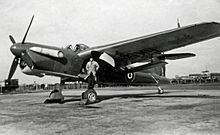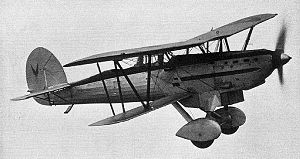
Vickers Armstrong Wikipedia link
Amazing Vickers Armstrong Whitworth
After World War II the company diversified into mechanical engineering and boat-building. The aircraft manufacturing arm was taken over by Westland Aircraft in 1960. Following a series of mergers and takeovers, the principal successor businesses to the company became FBM Babcock Marine Ltd, Spectris plc, and WFEL (formerly Williams Fairey Engineering Limited), the latter manufacturing portable bridges.
Founded in 1915 by Charles Richard Fairey (later Sir Richard Fairey) and Belgian engineer Ernest Oscar Tips on their departure from Short Brothers, the company first built under licence or as subcontractor aircraft designed by other manufacturers.[i] The first aircraft designed and built by the Fairey Aviation specifically for use on an aircraft carrier was the Fairey Campania a patrol seaplane that first flew in February 1917. In the third report of the Royal Commission on Awards to Inventors, reported in Flight magazine of 15 January 1925, aviation figures prominently. C. R. Fairey and the Fairey Aviation Co. Ltd, was awarded £4,000 for work on the Hamble Baby seaplane.
Fairey subsequently designed many aircraft types and, after World War II, missiles..

1929 saw the merger of the acquired railway business with those of Cammell Laird to form Metropolitan Cammell Carriage and Wagon (MCCW); Metro Cammell.
In 1935, before rearmament began, Vickers-Armstrongs was the third-largest manufacturing employer in Britain, behind Unilever and ICI.
In 1956 Dorothy Hatfield became the first female engineering apprentice at Vickers-Armstrongs (Aircraft), Brooklands, followed in 1958 by Janet Gulland who was the first female graduate apprentice at the company.
 |
|
| Industry | Aerospace |
|---|---|
| Founded | 1915 |
| Founder | Charles Richard Fairey |
| Defunct | 1960 (aircraft manufacturing) |
| Fate | Defunct |
| Successor | Westland Aircraft, WFEL Limited, Spectris |
| Headquarters | Hayes, Heaton Chapel, Ringway, UK |
| Key people |
|
| Products | |
| Subsidiaries |
|
|
|
|
|---|---|

| Aircraft Fairey Limited period 1925 to 1958 | ||||||||||||
|---|---|---|---|---|---|---|---|---|---|---|---|---|
|
|
|
|||||
|---|---|---|---|---|---|
|
|||||||||||||||||||||||
|---|---|---|---|---|---|---|---|---|---|---|---|---|---|---|---|---|---|---|---|---|---|---|---|
In 1977 the Fairey Group went into receivership and was effectively nationalised by the Government. Fairey went into liquidation when it introduced a Britten-Norman Islander production line into its subsidiary company, Avions Fairey, and overproduced the plane and subsequently faced redundancy payments of about £16 million in Belgium. The companies involved were as follows:.
The Fairey Britten-Norman Aircraft Company was taken over by Pilatus, then a subsidiary of the Oerlikon group in Switzerland.
The rescue action was taken by the Government under section 8 of the Industry Act 1972 acquiring from the official receiver of the Fairey Company Ltd the entire share capital for £201,163,000. The companies were managed by the National Enterprise Board (NEB). In 1980 The Fairey Group was purchased by Doulton & Co. (part of S Pearson & Son) from the NEB. At the time, Pearson's interests in manufacturing were concentrated in the Doulton fine china business. The engineering interests were strengthened in 1980 by the acquisition of the high technology businesses of Fairey, and their merging with Pearson's other engineering interests in 1982. However, these businesses were disposed of in 1986 as part of Pearson wishing to concentrate on core activities; acquired by Williams Holdings they became Williams Fairey Engineering Ltd and then WFEL Ltd

Vickers-Armstrongs Limited was a British engineering conglomerate formed by the merger of the assets of Vickers Limited and Armstrong Whitworth & Company in 1927

Vickers F.B.5 (Fighting Biplane 5) (known as the "Gunbus") was a British two-seat pusher military biplane of the First World War. Armed with a .303 in (7.7 mm) Lewis gun

Vickers Wellington was a British twin-engined, long-range medium bomber. It was designed during the mid-1930s at Brooklands in Weybridge, Surrey

Vickers VC.1 Viking is a British twin-engine short-range airliner derived from the Vickers Wellington bomber and built by Vickers-Armstrongs Limited

Vickers Vanguard was a short/medium-range turboprop airliner designed and produced by the British aircraft manufacturer Vickers-Armstrongs

Vickers Valiant was a British high-altitude jet bomber designed to carry nuclear weapons, and in the 1950s and 1960s was part of the Royal Air Force's "V bomber"



 |
|
| Fairey Fox Mk.IV of the Belgian Air Force. | |
| Role | Light bomber |
|---|---|
| Manufacturer | Fairey Aviation |
| Designer | Marcel Lobelle |
| First flight | 3 January 1925 (Mk.I) |
| Introduction | June, 1926 (Mk.I) |
| Retired | 1945 Swiss Air Force |
| Primary users | Royal Air Force Belgian Air Force Air Force of Peru |
|
|---|
Performance
Armament